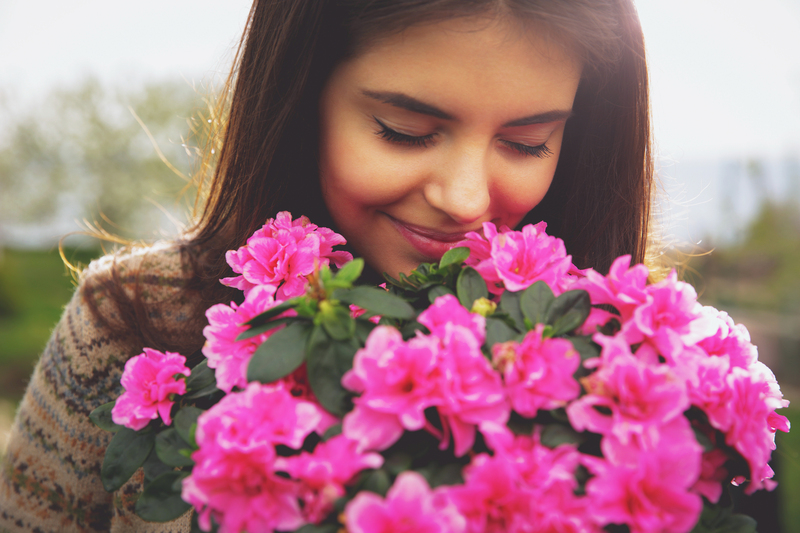
Carnations: Unfolding Tales of Enchantment and Diversity!
The captivating world of carnations has long been a source of fascination among florists, gardeners, and flower enthusiasts alike. Renowned for their beauty, symbolism, and a myriad array of colors, carnations hold a significant place in the tapestry of floral motifs around the world. This article delves into the intricate tales of enchantment and diversity that carnations bring to the floral scene
.The Historical Journey of Carnations
The journey of carnations spans centuries, intertwining with various cultures and traditions. Originating from the Mediterranean region, these blooms have wound their way into the hearts of many as symbols of love, fascination, and distinction. In ancient times, the Greeks and Romans revered carnations, often using them in ceremonial crowns and as decorative elements in art and literature.
Did you know? The name 'carnation' is believed to be derived from the Latin word 'carnis,' meaning flesh, as many early carnations were pink in hue. Alternatively, some scholars suggest it might stem from 'corone' or 'coronation' because of their use in ceremonial garlands.
The Diverse Varieties of Carnations
The carnation family--Dianthus caryophyllus--boasts a diverse palette of colors and forms. Here are some of the prominent types you may encounter:
- Standard Carnations: Known for their large, solitary blooms and extended stems, these are the ideal choice for bouquets and arrangements.
- Spray Carnations: These are smaller than the standard variety and produce multiple flowers per stem, perfect for smaller arrangements or adding volume.
- Dwarf Carnations: As the name suggests, these miniature versions are popular in gardens and as decorative potted plants.
Colors also play a pivotal role in the diversity of carnations, with each shade often conveying different meanings:
- Red Carnations: Symbolize deep love and admiration.
- White Carnations: Represent purity and innocence.
- Pink Carnations: Typically associated with a mother's undying love.
- Yellow Carnations: Denote disappointment or dejection.
- Purple Carnations: Indicate capriciousness.
Symbolism and Cultural Significance
Carnations carry rich symbolism and have been part of cultural expressions worldwide for centuries. In Christianity, it is believed that the first carnation bloomed from the tears of Mary, the Virgin Mother, making them a symbol of motherly love. In Korea, carnations are popular during Mother's Day celebrations to honor parents. Meanwhile, Russia features these blooms in Victory Day celebrations, symbolizing pride and beauty.
Over time, carnations have been incorporated into the language of flowers--floriography--used to express sentiments that words might fail to convey. This historical practice of sending flowers with coded meanings persists today, weaving carnations into various social and cultural fabrics.
Growing and Caring for Carnations
If you're captivated by their beauty, cultivating carnations at home can be a rewarding endeavor. Here are some essentials for successful cultivation:
- Choose the right location: Carnations prefer sunny spots that provide at least 4-6 hours of direct sunlight daily.
- Soil requirements: Well-drained, slightly alkaline soil is optimal for healthy growth.
- Watering: Ensure not to overwater. Let the soil dry between watering sessions to prevent root rot.
- Pruning: Regularly deadhead spent blooms to encourage new growth and maintain the plant's appearance.
- Fertilization: Use a balanced fertilizer every 6-8 weeks during the growing season to support flourishing blooms.
Enthralling Uses of Carnations
Carnations are not restricted merely to ornamental uses. These versatile blooms have found applications beyond decorations:
- Culinary Uses: The petals of carnations are edible and have been traditionally used to flavor drinks like Chartreuse in France, as well as to garnish salads and desserts.
- Perfumery: Their sweet fragrance makes them a popular choice in the creation of perfumes and essential oils.
- Medicinal Benefits: In various cultures, carnation tea is used for its purported benefits in easing stress and reducing fevers.
Carnations in Global Festivities
Across the globe, carnations are integral to numerous celebrations:
- Mother's Day: All around the world, carnations are the flowers of choice to express gratitude and love toward mothers.
- Weddings: Due to their durability and variety, carnations are popular bridal blooms.
- Graduations: In many cultures, these flowers are given to mark academic accomplishments.
Preserving the Allure of Carnations
The elegance and diversity of carnations create a fitting panorama of colors and meanings. In preserving them, consider drying or pressing your carnations. It's a heartening way to keep a piece of nature's art in the form of everlasting beauty. Traditional methods include air drying or using silica gel to maintain the flower's vibrancy during preservation.
With their striking appearance and storied past, carnations remain among the most cherished flowers, capturing tales of beauty and emotion intricately woven through endless varieties. Whether symbolizing love or grace, or even adding a pop of vibrant color to any setting, they evoke emotions and fond memories, preserving their enchantment in every form.
Conclusion: Embrace the Carnation's Charm
In the ever-evolving tapestry of florals, carnations stand as enduring emblems of affection and admiration, inviting all to indulge in their charm and explore the rich diversity they offer. Whether you're a seasoned botanist or an aspiring gardener, the lasting enchantment of carnations promises to captivate and inspire.
So next time you come across this bewitching flower, take a moment to appreciate its history, its diversity, and the profound meanings layered within its modest petals. Delight in the magical journey of carnations--let them sprinkle a touch of myth, mystery, and magnificence into your world!


